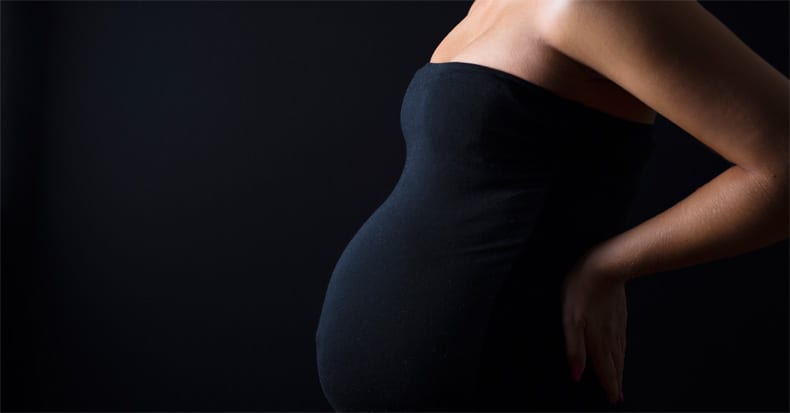Did you know that between 50% of all pregnant women suffer from back pain and 50-75% experience back pain during labor?
There are MANY reasons why back pain becomes an issue for women during their pregnancy. The first and most obvious reason is the displaced weight gain of 25-35 pounds (on average) resulting in pain in both the upper quarter (often from the increase in breast volume and weight) and lower quarter (from the growing baby). As the baby develops, an expectant mother’s center of gravity moves forward causing her to sway back, which can overload the lower region of the spine. The women most at risk for pregnancy-related back pain include those who are overweight prior to their pregnancy, those who perform physically strenuous work, and those with a history of back pain.
Another factor that can increase a woman’s risk for back pain during pregnancy is water retention. Not only does retaining water increase the load the body must carry, placing added stress on the musculoskeletal system, but water retention has also been associated with stiffer joints throughout the body, which can increase the risk for musculoskeletal pain—including back pain.
The body requires more fluid during pregnancy to maintain the health of a growing baby, and drinking water is one of the best ways to hydrate. The American Pregnancy Association (APA) reports that the body produces 50% more body fluids during pregnancy.
Fluid retention is a common complaint during pregnancy. By the third month of pregnancy, approximately 50% of women notice swelling in their hands and feet and most have significant swelling by the third trimester. Sudden and new swelling in the face, hands, and eyes accompanied by blurred vision, severe headache, painful urination, and/or the inability to urinate with abdominal pain and hypertension (>140/90) may represent a medical emergency called pre-eclampsia. This occurs later in the pregnancy, usually after the twentieth week. If this is suspected, don’t delay in obtaining emergent medical care!
To combat fluid retention, avoid constrictive clothing around the wrists and ankles, rest with the feet elevated (especially when temperatures exceed 75-85º F / 25-30º C), use ice packs, wear comfortable shoes, and try support tights or stockings. Dietary options for reducing fluid retention includes the use of certain herbs and vitamins, and foods such as celery, onions, eggplant, garlic, parsley, mint, bananas, coconut, dandelion, melons, salmon (omega-3 fatty acids), cucumber, and more.




